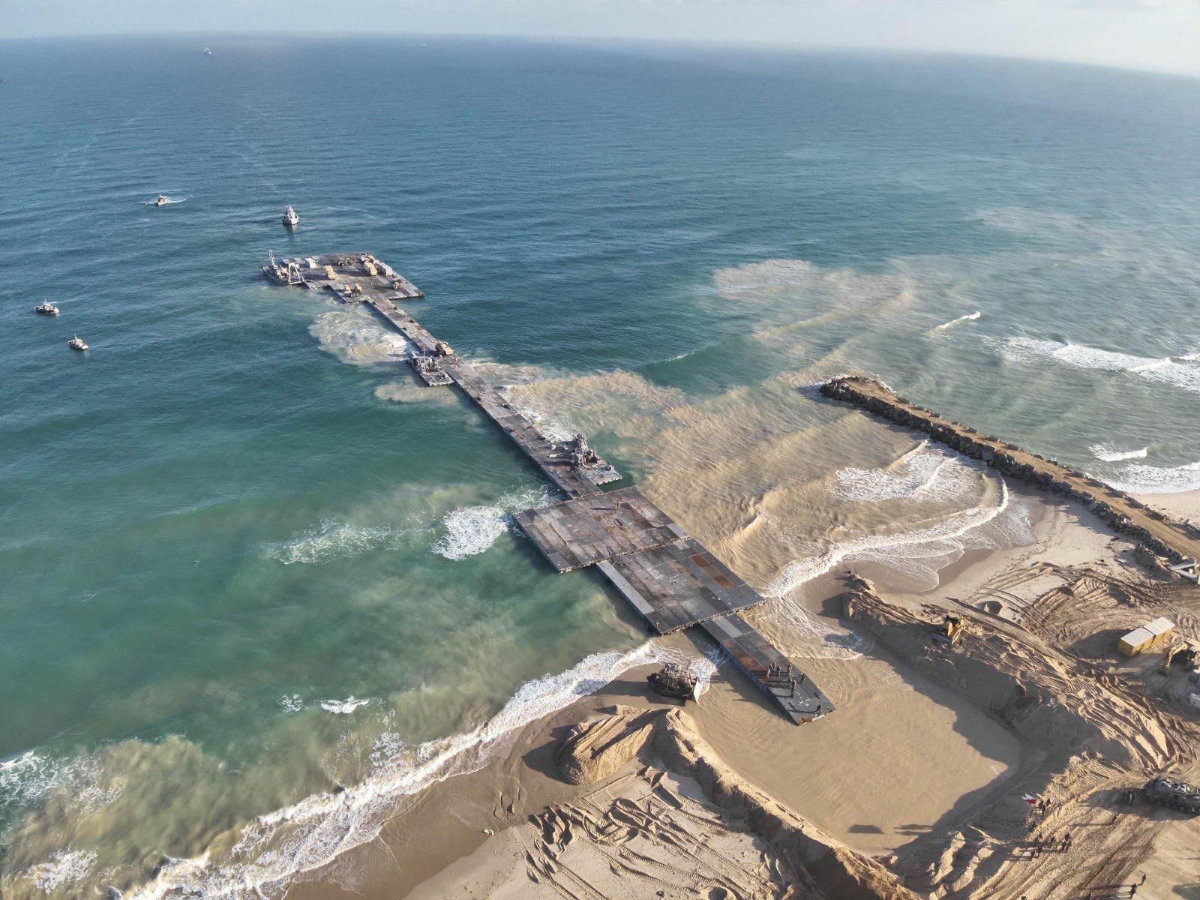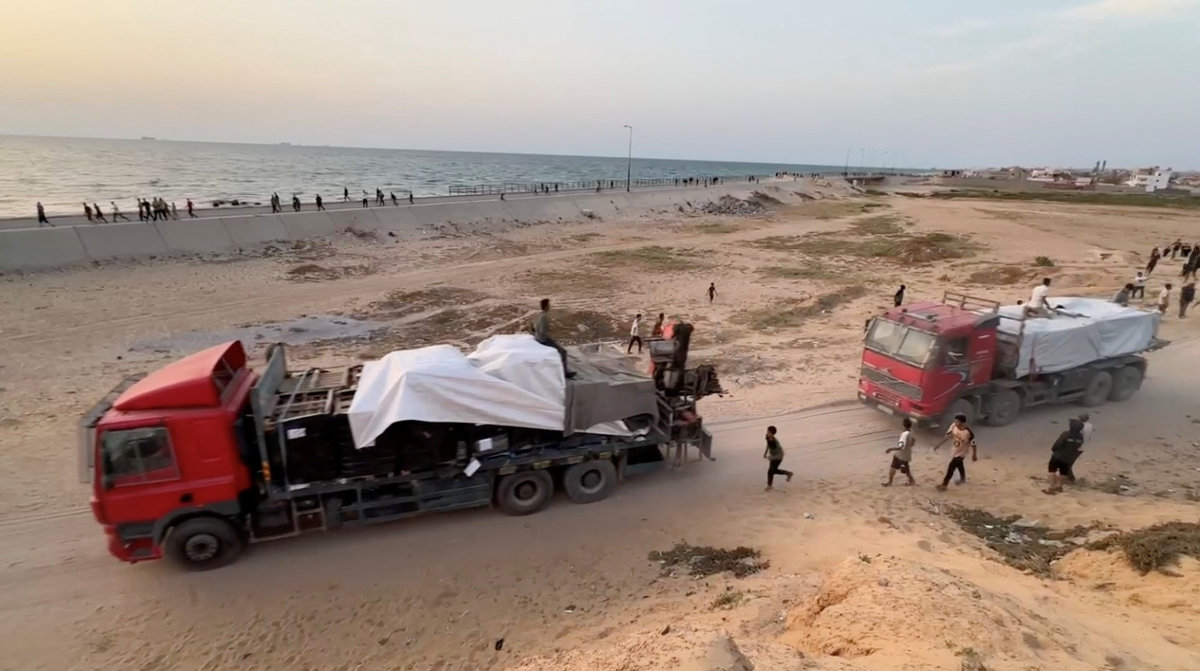BEIRUT: Hostilities on escalated significantly between Hezbollah and the Israel Defense Forces on Tuesday, following the killing of senior Hezbollah commander Wissam Al-Tawil on Monday.
Al-Tawil is the most senior Hezbollah military officer killed so far since the start of the conflict in southern Lebanon on Oct. 8. He was targeted by an Israeli drone in the Kherbet Selem village.
Prior to his funeral, Hezbollah retaliated in by targeting the IDF’s Northern Command headquarters in Safed, known as the Dado base, with a number of assault drones.
The Dado base is located 12 km from the Lebanese border.
Hezbollah said that “the attack came in response to the assassination crime of Hamas official Saleh Al-Arouri in Beirut’s southern suburb last Tuesday, and the assassination of commander Wissam Al-Tawil.”
The IDF reported “minor damage to the army’s Northern Command headquarters in Safed, as a result of the explosion of several drones loaded with explosives.”
Israeli media outlets said “the Northern Command headquarters was hit by a rocket salvo and drones launched from Lebanon,” adding that “an explosives-laden drone launched by Hezbollah blew up in in the headquarters.”
According to Hezbollah, the Safed base serves as the headquarters of the Northern Command of the Israeli Ground Forces, and leads the two divisions currently involved in the operations on the Lebanese front, which are the 91st Division opposite the eastern axis, and the 146th Division opposite the western axis of the Lebanese southern border. It also includes a large number of command and control systems involved in coordinating operations along the front with Lebanon.
Al-Tawil’s funeral was held in his village of Kherbet Selem, in the presence of hundreds of mourners.
During the funeral, an Israeli drone targeted a car parked outside the house of Al-Tawil’s brother, who was at the funeral, killing the driver and injuring several civilians in the vicinity of the house.
Several media reports mentioned that the victim was the bodyguard of a prominent figure attending the funeral.
The IDF anticipated possible Hezbollah retaliation by conducting airstrikes and artillery barrages on a number of border villages.
A resident told Arab News that “the Israeli Army treats every movement in the border area as belonging to members of Hezbollah and not civilians in the area. Therefore, the Israeli Army bombs everything that moves.”
A security source said: “The Israeli military chased after rapid cars and other vehicles, suspecting that the occupants were planning to carry out attacks against Israel.”
The source said they were surprised by “how the Israeli Army moves so freely to attack its targets from the air.”
Israeli forces attacked distant regions from the border and launched a missile at a car in Ghandouriya town, located in Nabatieh, resulting in the deaths of three Hezbollah members.
Hezbollah confirmed the losses of members Hassan Abdel Hussein Ismail, Mohammed Sharif Al-Sayyid Nasser, and Issa Ali Nour Al-Din. Additionally, the party also announced the death of Ali Hussein Burji from the town of Markaba.
Israeli raids also destroyed three homes in Kafr Kila, and the outskirts of Naqoura were subjected to phosphorous artillery shelling.
Avichay Adraee, an IDF spokesman, said on X: “The Israeli Army is targeting a group of drone launchers in southern Lebanon, raiding Hezbollah targets in Kafr Kila in southern Lebanon.”
In the morning, preemptive Israeli artillery shelling targeted the outskirts of the towns of Aitaroun, Aita Al-Shaab, Yaroun, and Maroun Al-Ras in the Bint Jbeil, Hula, and Mays Al-Jabal district. Israeli warplanes also raided the outskirts of the town of Fron in the central sector.
Hezbollah’s death toll has reached nearly 150 in the 94 days since the outbreak of hostilities.
Hezbollah claimed responsibility for conducting military operations against Israeli military sites including Al-Malikiyah, Al-Baghdadi, Yiftah barracks, Al-Manara, Hanita, and Bayad-Blida.
Jean-Pierre Lacroix, UN undersecretary-general for peace operations who is currently in Beirut, expressed concern over “the ongoing escalation in the region and Lebanon.”
He urged “all parties to calm down and support the army in southern Lebanon.”
Lacroix stressed: “The commitment of the secretary-general and the UN to Lebanon and their continued efforts to reduce the escalation and reach a permanent ceasefire.”
Caretaker Lebanese Prime Minister Najib Mikati called, through Lacroix, on “the international community to stop the Israeli aggression.”
He said: “We seek permanent stability and call for a lasting peaceful solution, but in return, we receive warnings through international delegates about a war on Lebanon.
“The position I repeat is: Do you support the idea of destruction? Is what is happening in Gaza acceptable?”
He reiterated “Lebanon’s readiness to enter into negotiations to achieve a long-term stabilization process in southern Lebanon and on the northern borders of occupied Palestine, and to adhere to international resolutions, the armistice agreement, and Resolution 1701.”
Parliamentary speaker Nabih Berri told Lacroix that “Lebanon appreciates the work done by UNIFIL forces during this period.”
He also highlighted the continuous Israeli escalation, which affects residential areas, civilians, ambulances, and media professionals.
This behavior, he said, “not only violates UN Resolution 1701 but also disregards all rules of engagement.”

























